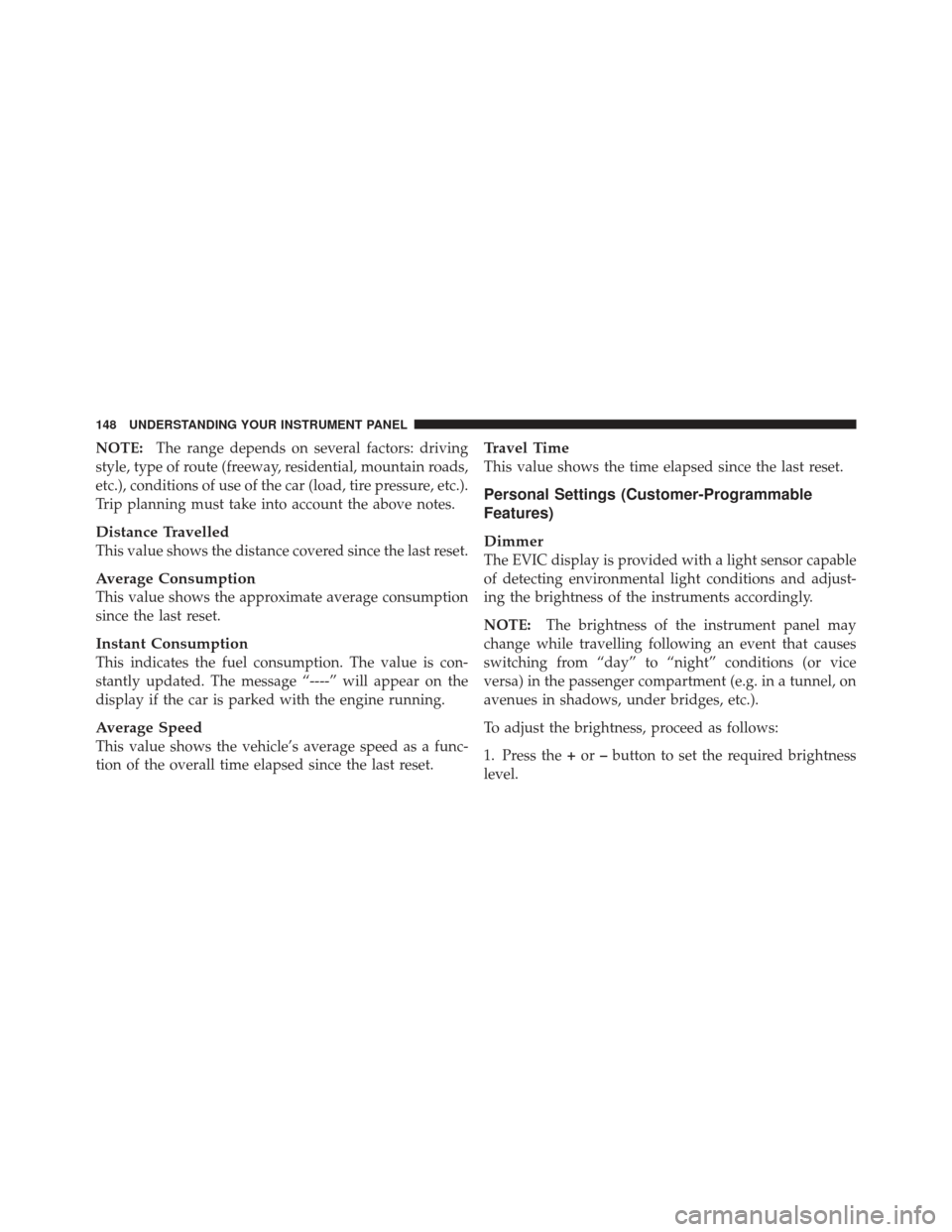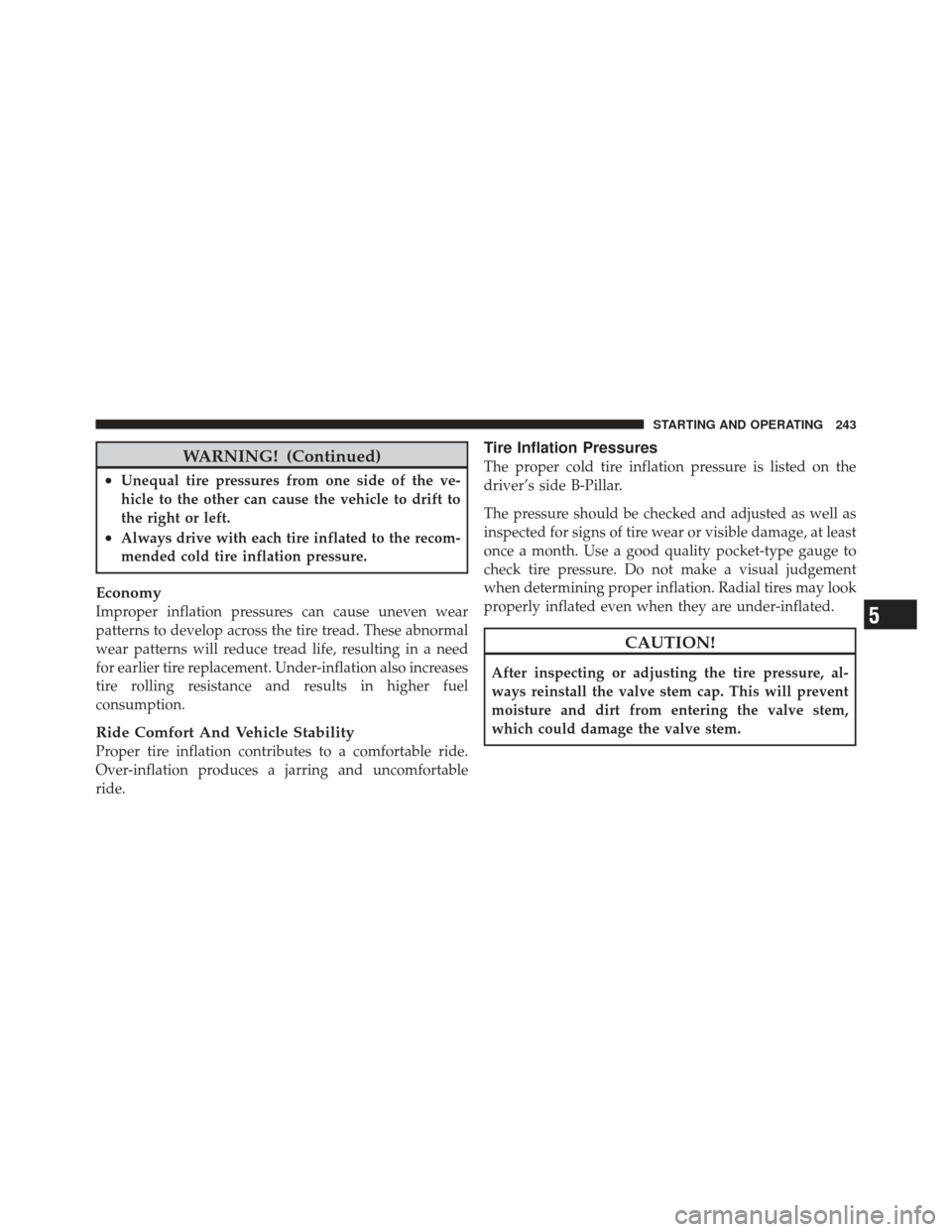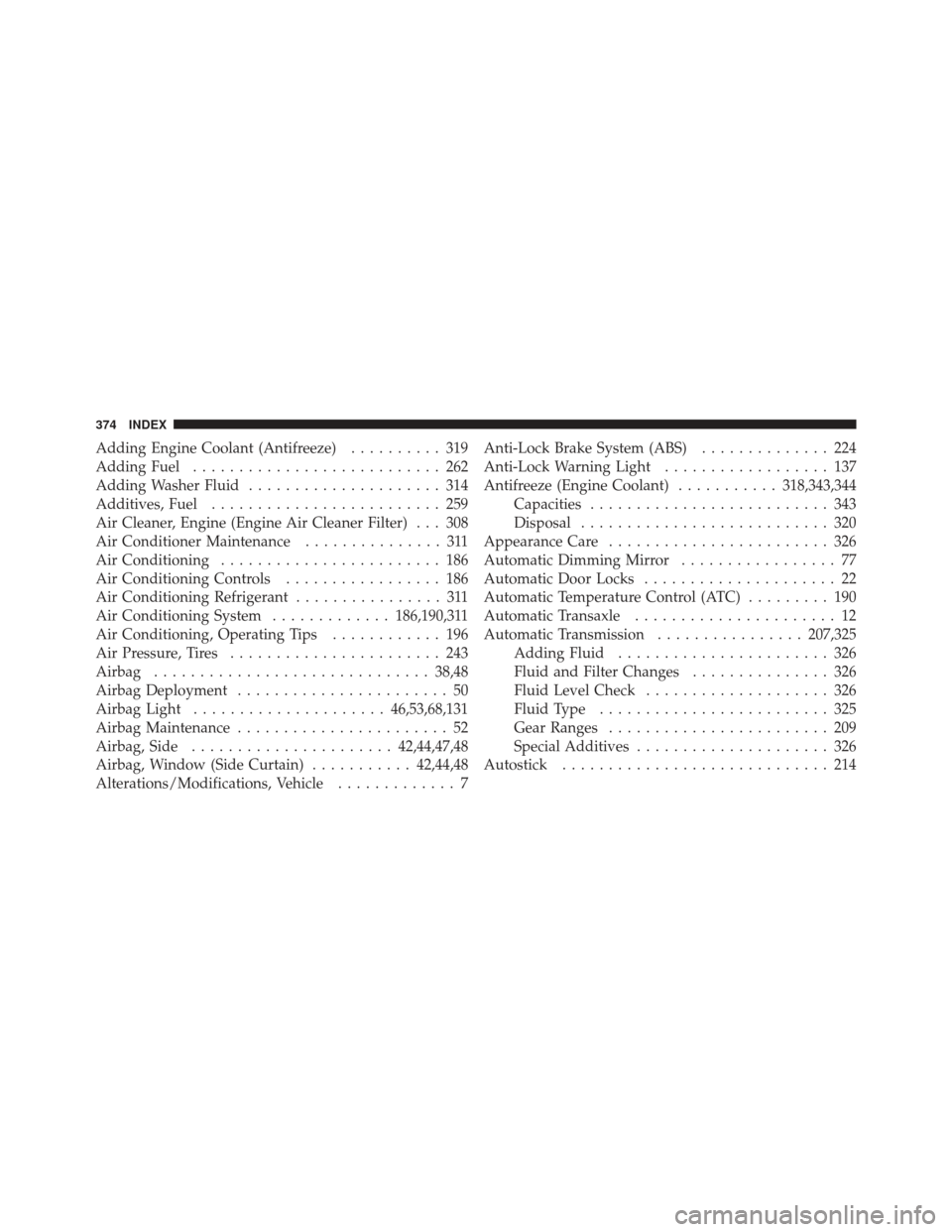Page 150 of 391

NOTE:The range depends on several factors: driving
style, type of route (freeway, residential, mountain roads,
etc.), conditions of use of the car (load, tire pressure, etc.).
Trip planning must take into account the above notes.
Distance Travelled
This value shows the distance covered since the last reset.
Average Consumption
This value shows the approximate average consumption
since the last reset.
Instant Consumption
This indicates the fuel consumption. The value is con-
stantly updated. The message “----” will appear on the
display if the car is parked with the engine running.
Average Speed
This value shows the vehicle’s average speed as a func-
tion of the overall time elapsed since the last reset.
Travel Time
This value shows the time elapsed since the last reset.
Personal Settings (Customer-Programmable
Features)
Dimmer
The EVIC display is provided with a light sensor capable
of detecting environmental light conditions and adjust-
ing the brightness of the instruments accordingly.
NOTE: The brightness of the instrument panel may
change while travelling following an event that causes
switching from “day” to “night” conditions (or vice
versa) in the passenger compartment (e.g. in a tunnel, on
avenues in shadows, under bridges, etc.).
To adjust the brightness, proceed as follows:
1. Press the +or –button to set the required brightness
level.
148 UNDERSTANDING YOUR INSTRUMENT PANEL
Page 245 of 391

WARNING! (Continued)
•Unequal tire pressures from one side of the ve-
hicle to the other can cause the vehicle to drift to
the right or left.
•Always drive with each tire inflated to the recom-
mended cold tire inflation pressure.
Economy
Improper inflation pressures can cause uneven wear
patterns to develop across the tire tread. These abnormal
wear patterns will reduce tread life, resulting in a need
for earlier tire replacement. Under-inflation also increases
tire rolling resistance and results in higher fuel
consumption.
Ride Comfort And Vehicle Stability
Proper tire inflation contributes to a comfortable ride.
Over-inflation produces a jarring and uncomfortable
ride.
Tire Inflation Pressures
The proper cold tire inflation pressure is listed on the
driver’s side B-Pillar.
The pressure should be checked and adjusted as well as
inspected for signs of tire wear or visible damage, at least
once a month. Use a good quality pocket-type gauge to
check tire pressure. Do not make a visual judgement
when determining proper inflation. Radial tires may look
properly inflated even when they are under-inflated.
CAUTION!
After inspecting or adjusting the tire pressure, al-
ways reinstall the valve stem cap. This will prevent
moisture and dirt from entering the valve stem,
which could damage the valve stem.
5
STARTING AND OPERATING 243
Page 309 of 391

Engine Oil Selection
For best performance and maximum protection for all
engines under all types of operating conditions, the
manufacturer recommends engine oils that are API Cer-
tified and meet the requirements of Chrysler Material
Standard MS-6395.
American Petroleum Institute (API) Engine Oil
Identification Symbol
This symbol means that the oil has
been certified by the American
Petroleum Institute (API). The
manufacturer only recommends
API Certified engine oils.
CAUTION!
Do not use chemical flushes in your engine oil as the
chemicals can damage your engine. Such damage is
not covered by the New Vehicle Limited Warranty.
Engine Oil Viscosity (SAE Grade)
SAE 5W-30 engine oil is recommended for all operating
temperatures. This engine oil improves low temperature
starting and vehicle fuel economy. Your engine oil filler
cap also states the recommended engine oil viscosity
grade for your engine.
Lubricants which do not have both the engine oil certi-
fication mark and the correct SAE viscosity grade num-
ber should not be used.
The engine oil filler cap also shows the recommended
engine oil viscosity for your engine. For information on
7
MAINTAINING YOUR VEHICLE 307
Page 376 of 391

Adding Engine Coolant (Antifreeze).......... 319
Adding Fuel ........................... 262
Adding Washer Fluid ..................... 314
Additives, Fuel ......................... 259
Air Cleaner, Engine (Engine Air Cleaner Filter) . . . 308
Air Conditioner Maintenance ............... 311
Air Conditioning ........................ 186
Air Conditioning Controls ................. 186
Air Conditioning Refrigerant ................ 311
Air Conditioning System .............186,190,311
Air Conditioning, Operating Tips ............ 196
Air Pressure, Tires ....................... 243
Airbag .............................. 38,48
Airbag Deployment ....................... 50
Airbag Light ..................... 46,53,68,131
Airbag Maintenance ....................... 52
Airbag, Side ...................... 42,44,47,48
Airbag, Window (Side Curtain) ...........42,44,48
Alterations/Modifications, Vehicle ............. 7Anti-Lock Brake System (ABS)
.............. 224
Anti-Lock Warning Light .................. 137
Antifreeze (Engine Coolant) ...........318,343,344
Capacities .......................... 343
Disposal ........................... 320
Appearance Care ........................ 326
Automatic Dimming Mirror ................. 77
Automatic Door Locks ..................... 22
Automatic Temperature Control (ATC) ......... 190
Automatic Transaxle ...................... 12
Automatic Transmission ................207,325
Adding Fluid ....................... 326
Fluid and Filter Changes ............... 326
Fluid Level Check .................... 326
Fluid Type ......................... 325
Gear Ranges ........................ 209
Special Additives ..................... 326
Autostick ............................. 214
374 INDEX